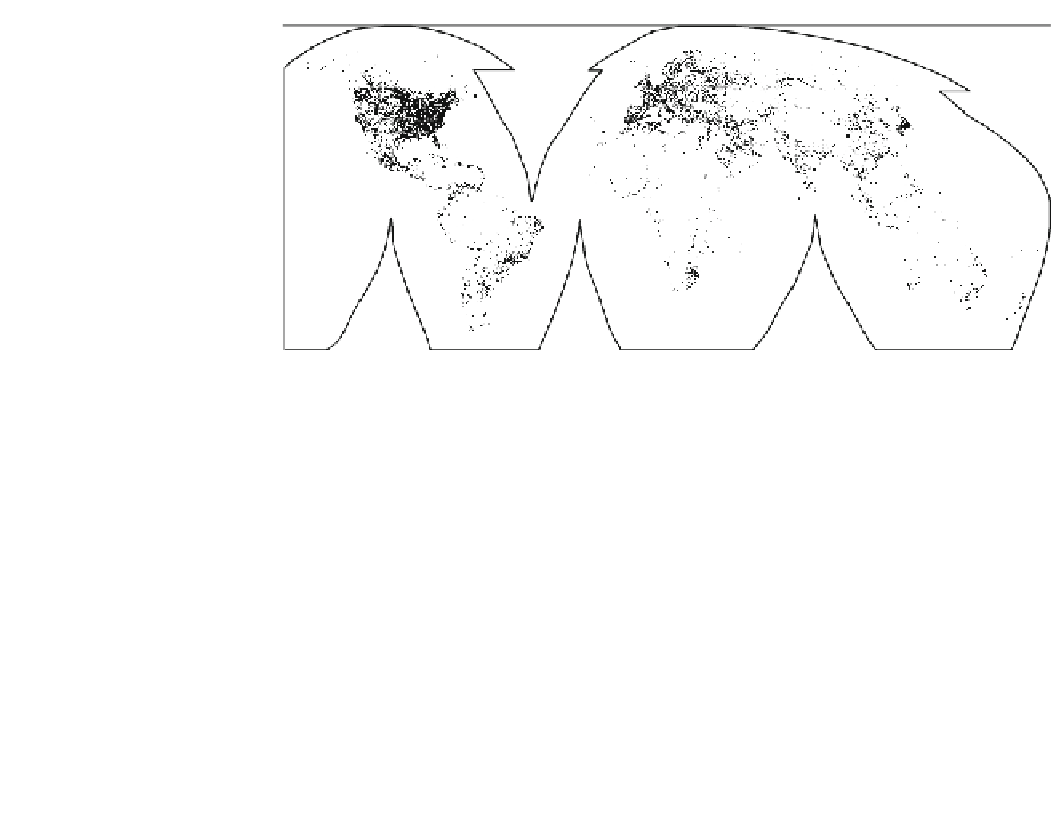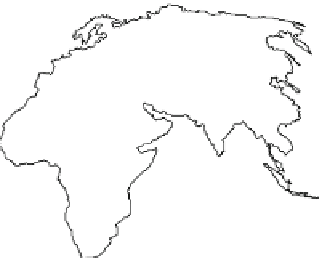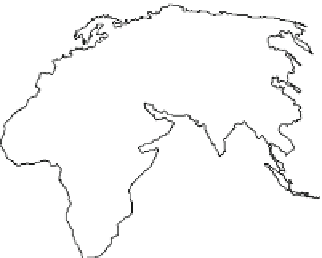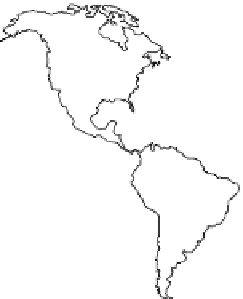Geoscience Reference
In-Depth Information
Fig. 10.3
Indicators of coastline
where tsunami will impact the
most. a Night lights from major
economically developed urban
centers. Data based on satellite
measurements using the United
States Defense Meteorological
Satellite Program (DMSP)
Operational Linescan System
(OLS). Source
http://www.ngdc.
The darker the shading, the
greater the concentration of peo-
ple. b Large coastal cities with
over 2 million inhabitants. Data
are current to the year 2013.
Main Source
http://www.
(a)
(b)
>2
>5
>10
>15 million
on tsunami flow is proportional to the diameter of the tree.
But, if a tree is not mature, it provides little resistance to a
tsunami. For trees with a minimum diameter of 40 cm, the
force of a tsunami is reduced 20, 40 and 100 % per 100, 200
and 400 trees respectively for each 10 m of coastline
(Murata et al.
2010
). Greenbelts should not have access
roads cut through them. The latter become pathways for
increased tsunami flow. Simply having 10 % of a greenbelt
cut by roads perpendicular to the coast can increase flow
velocities on the roads seven-fold. However, trees may not
save you. All but one of the 70,000 trees planted along the
Rikuzentakata coast in the southern Iwate Prefecture of
Japan were destroyed by the T ¯hoku Tsunami of March 11,
2011 (Earthquake Engineering Research Institute
2011
).
Trunks 25-40 cm in diameter were snapped off 1-2 m
above ground level by flow that may have reached 19 m
depth. The one surviving tree, called the tree of hope,is
dying because of salinity contamination.
Third, tsunami flood across river deltas especially those
that are cleared and where the offshore bathymetry is steep.
On these coasts—and they are numerous, for example the
east coast of Japan and the southeast coast of Australia—
tsunami waves approach shore rapidly and with most of
their energy intact. Delta surfaces lying only a few meters
above sea level can allow tsunami to penetrate long dis-
tances inland, because once the wave gets onto the surface it
propagates as if it was still traveling across shallow
bathymetry. There are records of tsunami in small seas
traveling 10 km inland across a delta for this reason. There
was no more poignant example of this than the footage
taken from a helicopter of the T ¯hoku Tsunami crossing the
Fourth, because of their long wavelengths, tsunami
become trapped in harbors and undergo resonant amplifi-
cation along steep harbor foreshores. As pointed out in
Chap. 1
, tsunami is a Japanese word meaning, harbor wave,






























































































































































